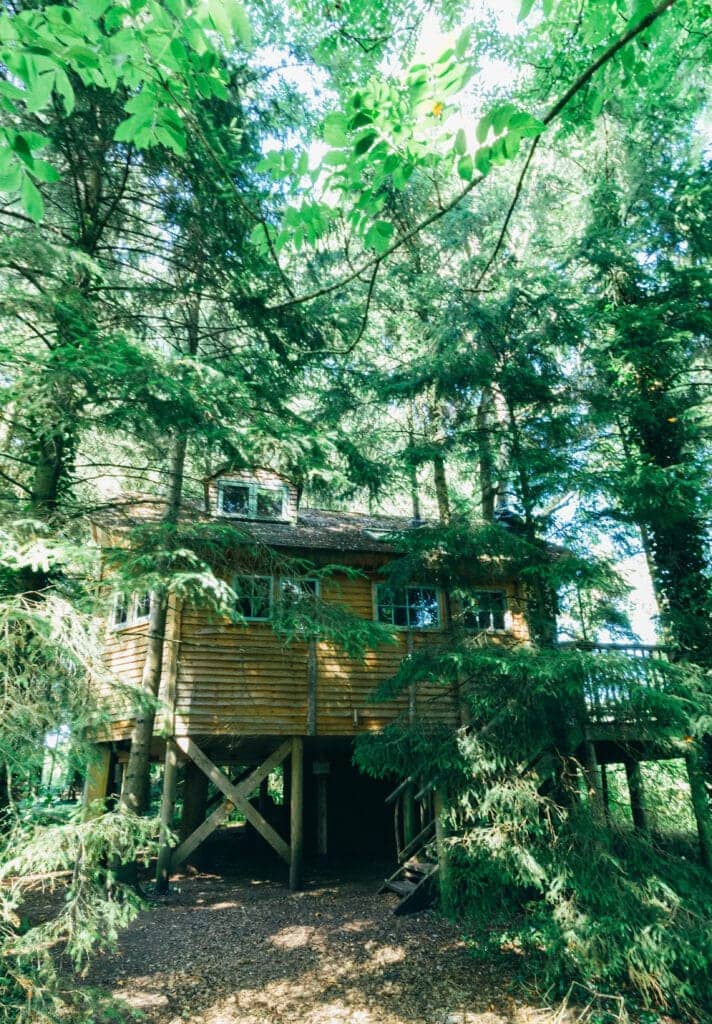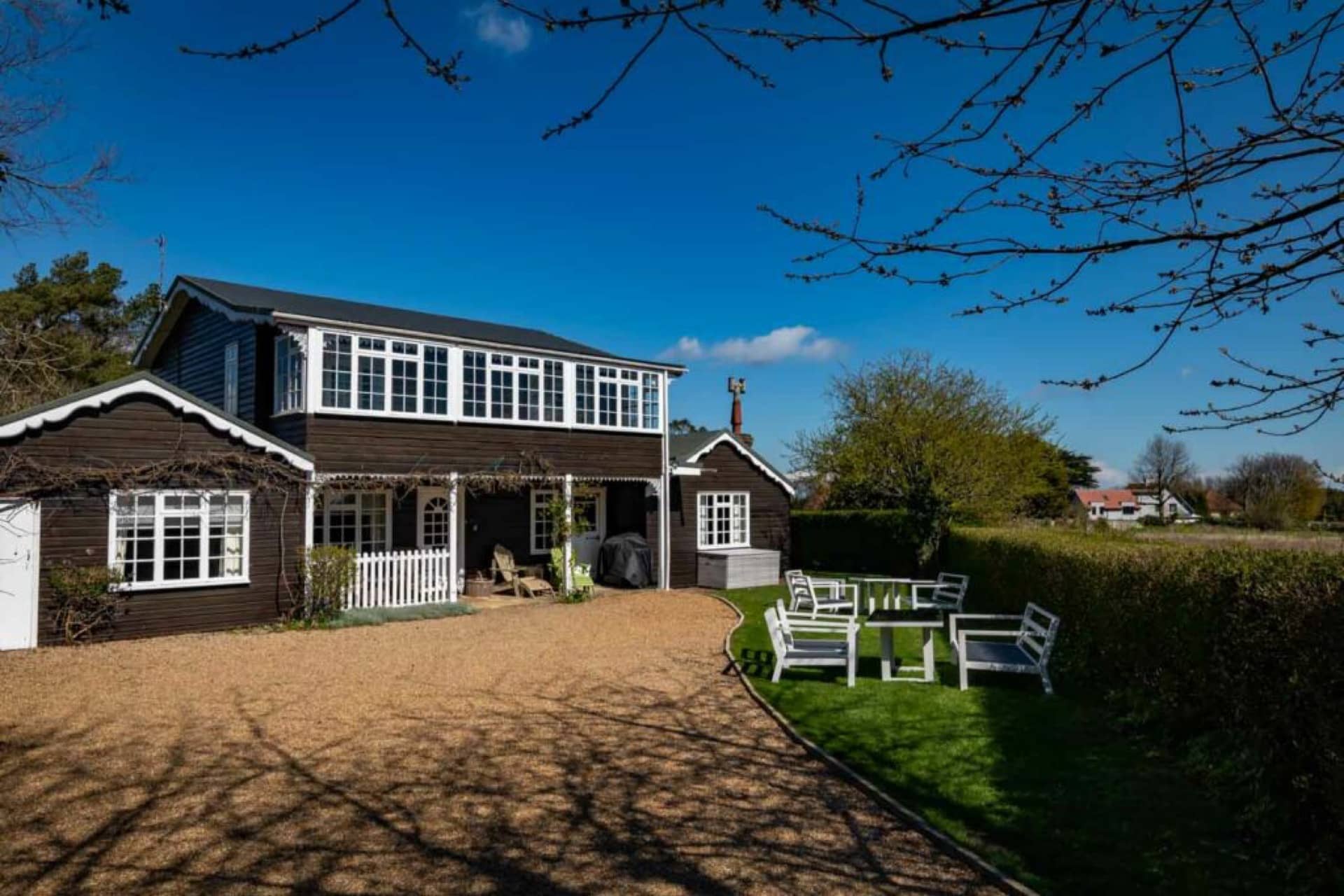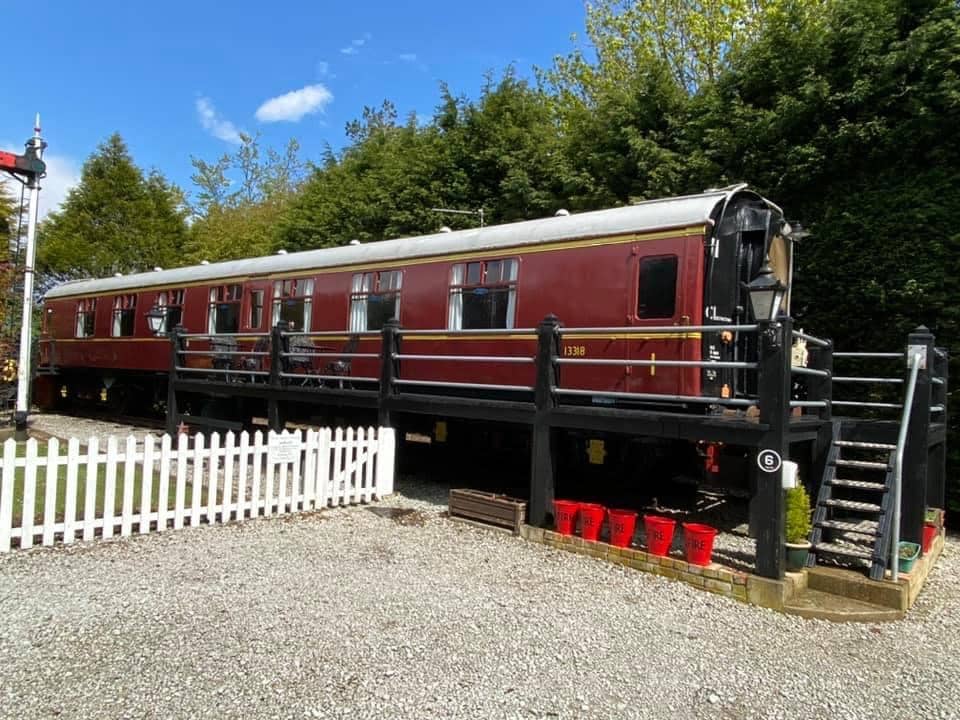
Champing in St Michael the Archangel Church
Feeling angelic? Time to go Champing™! Say what?! |t’s camping in historic churches! A cool idea from The Churches Conservation Trust (the national charity protecting historic churches at risk) to help preserve these ancient spaces for the future. And no, you don’t have to be a Christian. All are welcome. Even dogs!
St Michael’s the Archangel is in Booton, close to Norwich and the Norfolk coast, amid a patchwork of green farmland on the edge of Reepham, a beautiful Georgian market town with great pubs and an award-winning restaurant. Nicknamed the ‘Cathedral of the Fields’ it’s a huge yet cosy space with slender towers dominating the wide East Anglian landscape for miles around. Designed by an eccentric clergyman descended from Pocahontas and mates with Charles Darwin, this extraordinary building is amazingly decorative – definitely no bell tent! Word is the Reverend Whitwell Elwin had no help from an architect and just nicked ideas from all his favourite churches. Cheeky!
St Michael’s is one of the most popular Champing churches, large enough for up to 16 guests. All Champers get exclusive use of their heritage church, no matter how many are staying. Tea and coffee is provided, along with camp-beds, battery lanterns and cosy seating – just bring your favourite glamping essentials. A fabulously unusual choice for walkers and cyclists and special occasions!
All Champing churches are consecrated and open for worship during the day, with overnight visitors welcomed from 4pm to 10am. Will you be a happy Champer?

Stay in a Treehouse
Life moves pretty fast. Wouldn’t you like slow it down once in a while? Simplify the To Do List and just: relax, unwind, explore. All you need is the magic of West Lexham.
Discover a luxurious, alternative range of glamping accommodation stretched across 21 acres of lush garden, woodland, lake and river. Your home-from-home could be a boutique bell tent on the shore of a lake, cool, quirky cabin or peaceful treehouse in the leafy embrace of a forest. West Lexham’s eco-friendly paradise is perfect for back-to-nature adventure holidays and enchanting escapes for couples seeking some very special together time. Each bewitching treehouse is as different and full of character as the trees it sits among, blending rustic boho design with the finest contemporary comforts.
West Lexham is a spellbinding, healing environment that’s all about connection, nurture, creativity and transformation. It’s not just an Instagrammable place to sleep. West Lexham is a holistic retreat, snuggled down in an idyllic river valley alive with majestic ancient trees, abundant wildlife and nights full of stars.
To nourish your body the Manor gardens provide fresh seasonal produce for the restaurant, and the innovative kitchen team will get your jaded old taste buds tingling again. Almost entirely powered by renewables, West Lexham a place to unplug, unwind and recharge, away from the world’s noise and mayhem. Chill and wander with nature as you find your own little corner of calm to reflect, breathe and just be. Bliss.

Hippisley Hut: Birthplace of Wireless Interception
How did a little wooden hut in Old Hunstanton play a crucial role in the outcome of the First World War?
The hut was named after Richard John Bayntun Hippisley, a keen amateur radio enthusiast (callsign HLX). At the outbreak of war, many wireless amateurs, including Bayntun and his friend Edward Russell Clarke (callsign THX), were assigned to the Admiralty’s Navel Intelligence Division Room 40 as ‘voluntary interceptors’, establishing a network of wireless stations. Bayntun and Russell Clarke had reported signals from the German Navy received on a lower wavelength than those detected by the higher frequency Marconi stations. In late 1914, Bayntun and Russell Clarke were sent to set up a listening post in a a former coastguard station in Hunstanton, West Norfolk, the highest point nearest the German coast, and home to an existing Marconi wireless station. The top secret work at Hippisley’s Hut played a critical role in the Battle of Jutland when an unusual level of German warship communication was detected in Wilhelmshaven in May 1916. The German fleet was stirring in the North Sea and thanks to wireless interception, the British fleet had warning. There was terrible loss of life, but the German navy was contained.
Today you can stay at what was known as Hippisley’s Hut. The original timber construction is now part of an elegant West Norfolk self-catering holiday home in the heart of the village, available with Norfolk Coast Cottages. Sleeping 10, it’s perfect for holidays with a sense of history.

Re-wild Yourself!
From Oberon and Titania to Johnny Rooster Byron, there has always been deep magic in an English wood. Escape to the forest and re-wild your spirit by camping in the dappled glades of Bradmoor Woods. Nestle into a colourful wooden birdhouse, snuggle down in an old grain silo, climb into an upturned boat hull salvaged from Blakeney or dream the night away in a hundred year old railway carriage, pulled to the woods by shire horses all the way from Swaffham station. All the glamping spaces are imaginatively upcycled with French enamel stoves for keeping cosy on chilly nights. And you’ll love the communal Round House, a log-built gathering place for your group to do yoga, pottery, bushcraft or dance, sing round the fire and have a good old starlight shindig.
This is a truly wild place – summon your inner Bear Grylls, climb trees, sling a hammock and build a den. Your neighbours are foxes, badgers, stoats and weasels, hunting through the bracken at night while you sleep snug in your bed. Red, fallow and roe deer roam through the trees and magnificent buzzards circle, softly mewing overhead. The rare chalk-stream of the River Nar meanders past, teeming with life, refreshingly cold and clear. Perhaps you’ll spy the flashing brilliance of an otter, chasing a brown trout upstream, spot charismatic little water voles, darting mayflies or hear frogs singing in the early springtime. Whatever floats your boat, here you can take refuge from the ordinary.

Experience Living in a Lighthouse
Ever dreamed of living in a lighthouse? Majestic on candy-striped cliffs, Hunstanton lighthouse is now a unique self-catering heritage property and landmark of Norfolk’s proud maritime history. Sleeping up to 8 in 4 luxury en-suite bedrooms, it’s gloriously warm and snug, perfect for cosying up with a hot chocolate or G&T to watch wild winter storms roar in across the North Sea, with binoculars and a telescope to keep a look-out at the ever-changing picture.
Before the lighthouse was decommissioned in 1921, two lighthouse keepers lived here, tending a beam that shone out over the waves for 18 miles. The lighthouse sits next the former Coastguard station and picturesque ruins of St Edmund’s Church. During the First World War, a Marconi radio interception tower stood here and in the Second World War the lighthouse was used by the Royal Observer Corps, when fears of invasion were very real.
Hunstanton’s first lighthouse was built in 1665, when a fire blazed from a metal basket atop a wooden structure. Inevitably it burnt down in 1777. A second wooden tower was built in 1778, one of the first oil lamp lighthouses. In 1837 Trinty House bought it, rebuilding the lighthouse in its current form between 1840-1844. The light has gone now, but guests can still climb 85 winding steps to the top, for stunning panoramic coastal views over the Wash, all the way to Lincolnshire on a crystal clear day.
To book contact Norfolk Coast Cottages.

The Old Station Heacham
Ignore the timetable. Heacham Station turns back the clock for rural railway nostalgia at its most romantic. The last train left the platform on 3rd May 1969 but don’t worry, you haven’t missed your stop. The tracks might have gone, but this pretty English station endures. Once part of the Great Eastern Railway (King’s Lynn to Hunstanton Line) it’s now a first class holiday destination celebrating the golden age of travel.
Snuggle up in the cosy original Victorian Waiting Rooms (sleeps 2) or step on board the beautifully restored 1960s Railway Carriage (sleeps 4). Dream of clandestine meetings, mysterious happenings or maybe the adventures of a certain boy wizard. Muggles should bring their own chocolate frogs!
This secluded piece of locomotive heritage in the West Norfolk village of Heacham promises to make you smile. Just a few minutes’ walk from the beach, it’s right next door to The West Norfolk Pub, where the restaurant is in Heacham Station’s original Railway Goods Shed.
Trainspotters might like to know the coach is a Mark I First Class Railway Carriage. Built at Swindon in 1962 she served passengers on the West Coastline until 1986, then becoming part of the Motorail Inter City Charter Unit. Eventually acquired from the Shackerstone Railway the proud old carriage now stands on specially laid track, resplendent in original British Rail maroon livery, complete with all insignia. A must for film fans, if you love Before Sunrise or Agatha Christie, you won’t want this to be a Brief Encounter.
Build your own itinerary
If you fancy creating your own itinerary for a day trip to Norfolk or a longer visit, it couldn’t be simpler. Just go to Search Activities and select from our wide range of free and paid-for experiences, saving any that capture your imagination with the click of a button.
Once you’ve finished, you’ll find all the information stored in My Favourite, where you can drag and drop activities to create your own day-by-day itinerary! You can download this to a calendar and even share it with friends.
